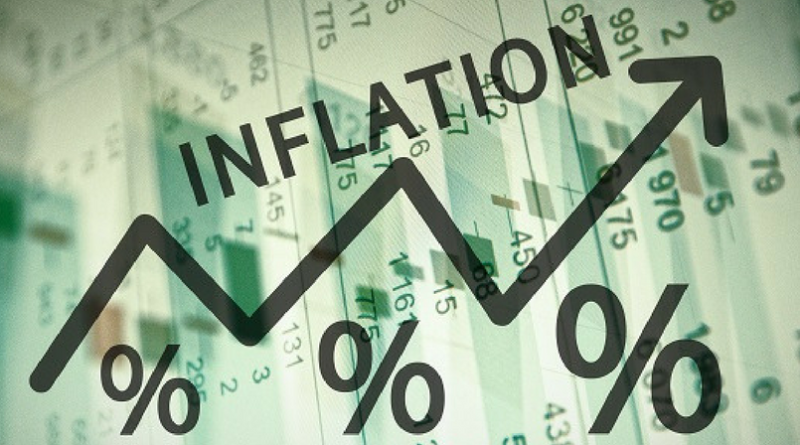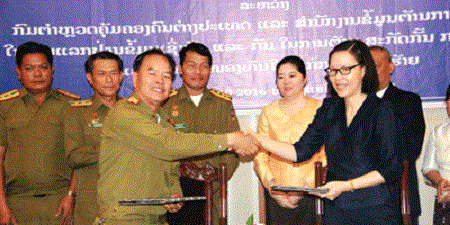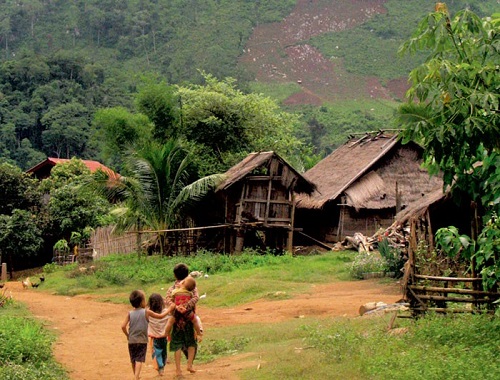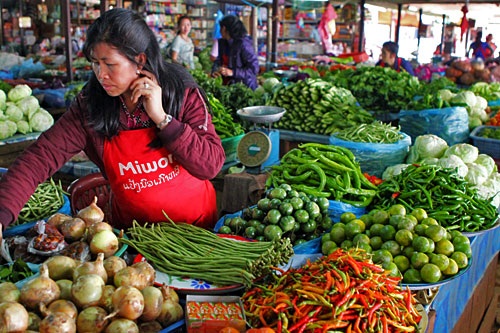Inflation Surges In August
Source: Vientiane Times
Inflation showed an upward trend in August, driven mainly by fluctuations in currency exchange rates and rising food prices.
According to a report from the Lao Statistics Bureau, the year-on-year inflation rate in August was 5.84 percent, up from 5.12 percent in July.
The price of food and beverages increased by 9.91 percent year-on-year and 2.19 percent month-on-month. This was largely attributed to the fact that Laos buys huge quantities of food from neighbouring countries, including seafood.
The price of rice rose by 9.74 percent year-on-year, pork by 7.3 percent, beef by 11.16 percent, poultry by 9.18 percent, fish and seafood by 5.23 percent, cooking oil by 6.32 percent, fruit by 3.69 percent, and vegetables by 11.8 percent.
Meanwhile the price of services in the post and telecommunications sector rose by 0.8 percent year-on-year in July to 7.96 percent in August.
The cost of transportation increased by 0.52 percent month-on-month and 0.97 percent year-on-year. In addition, the cost of spare parts and services at auto repair shops surged by 5.6 percent year-on-year.
In contrast, the price of oil fell by 11.9 percent year-on-year, according to the Lao Statistics Bureau.
Prices in the clothing and footwear category rose by 0.53 percent month-on-month and 5.33 year-on-year, with clothing increasing by 5.65 percent year-on-year.
The cost of household goods rose by 0.27 percent month-on-month and 4.97 year-on-year. The price of interior décor items such as furniture and rugs surged by 7.3 percent year-on-year.
Prices in the education category rose by 1.28 percent month-on-month and 0.85 percent year-on-year. Student uniforms, equipment and other education-related costs all increased.
Last year, the inflation rate averaged 3.32 percent, according to the Bank of the Lao PDR.
Inflation soared to 6.94 percent in January this year before dipping to 6.24 percent in February, 6.14 percent in March, 5.84 percent in April, 5.46 percent in May, 5.28 percent in June, and 5.12 percent in July.
The fluctuation in currency exchange rates is one of the main factors driving inflation because businesses have to spend more money to buy foreign currencies to import goods.
According to the Lao Statistics Bureau, the value of the kip fell by 4.29 percent against the US dollar and 10.3 percent against the Thai baht in July, compared to the same month last year.
Due to restrictions in official exchange rates, many traders buy foreign currencies in the parallel market so they can continue to buy imported goods.
According to BCEL’s exchange rates on August 3, US$1 bought 9,212 kip and sold for 9,232 kip. One baht bought 316.23 kip and sold for 318.61 kip.
The government is attempting to cap rising food prices by pushing for greater domestic productivity and helping producers to obtain financing, to minimise the need for imports.
However, the volume of goods produced in Laos does not come close to meeting market demand, and large quantities of food items must still be imported from Thailand.






